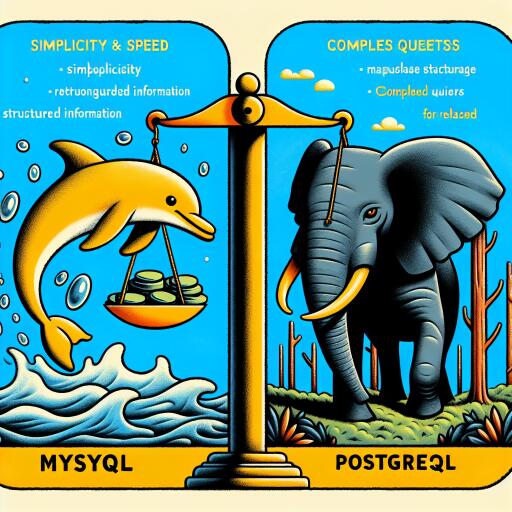Difference Between MySQL and PostgreSQL: Explained With Example
When delving into the world of relational database management systems (RDBMS), you’ll likely come across two prominent names: MySQL and PostgreSQL. Both systems offer robust solutions for managing data, but their individual features, performance metrics, and best use cases set them apart. This deep dive aims to shed light on their differences, guiding you through choosing the best database solution for your specific needs.
Introduction to MySQL and PostgreSQL
MySQL, brought into existence by MySQL AB and now under Oracle Corporation’s stewardship, is an open-source RDBMS known for its user-friendliness, scalability, and high acceptance rate among web developers and small to medium enterprises. Its straightforwardness and efficiency in executing operations make it a go-to for numerous applications.
On the other hand, PostgreSQL, affectionately known as “Postgres,” distinguishes itself through its comprehensive features, extensibility, and stringent SQL compliance. It garners praise from sectors requiring high levels of complexity and customization, such as large enterprises and data-heavy applications.
Key Features and Capabilities
MySQL simplifies data management with a rich assortment of data types and supports user-defined functions (UDFs) and stored procedures, albeit offering fewer extensibility features compared to PostgreSQL. PostgreSQL, with its broader range of built-in and user-defined data types, excels in customization. It allows for intricate stored procedures, triggers, and custom functions, supporting languages like PL/pgSQL, PL/Python, and PL/Perl.
On the transactions front, MySQL upholds the ACID properties with the InnoDB storage engine but sets REPEATABLE READ as its default isolation level, potentially leading to phantom reads. PostgreSQL advances with versatile transaction and concurrency control, presenting numerous isolation levels and utilizing a multiversion concurrency control (MVCC) mechanism to maintain consistency without hampering concurrency.
Performance and Scaling
MySQL shines in read-heavy operations and high-traffic web environments, offering efficient indexing, caching, and replication for horizontal scaling. Though PostgreSQL may experience slight performance hitches in specific scenarios compared to MySQL, it boasts features like parallel query processing and table partitioning, which markedly improve the utilization of available hardware resources.
Regarding high availability and scalability, MySQL and PostgreSQL provide a range of replication features and tools designed to achieve redundancy, fault tolerance, and distributed deployments. MySQL’s replication capabilities are matched by PostgreSQL’s streaming replication, logical replication, and the ease of setting up high-availability clusters with tools like PostgreSQL Automatic Failover (PAF) and Patroni.
Community and Support
MySQL and PostgreSQL both enjoy the backing of large, active communities. MySQL’s extensive documentation, vibrant forums, and third-party tools make it a resource-rich ecosystem. PostgreSQL doesn’t lag behind, with its dedicated community, comprehensive documentation, and various community-driven initiatives ensuring robust support and continuous improvement.
Use Cases: Where They Excel
MySQL is synonymous with web development, serving as the backbone for dynamic websites, e-commerce platforms, content management systems (CMS), and social media platforms, thanks to its scalability, performance, and excellent integration with web technologies.
PostgreSQL finds its strength in enterprise applications requiring complex data management solutions, analytical systems, and applications demanding high data integrity and extensibility. Its support for advanced analytics, geospatial data, and NoSQL-like features also makes it a prime choice for IoT applications, scientific research, and data-intensive projects.
Examples in Action
To illustrate the syntactic and functional distinctions, consider the example of creating a “users” table. MySQL and PostgreSQL have different approaches to defining auto-incrementing primary keys and stored procedures, showcasing their unique syntax and capabilities. Whether it’s initiating transactions or rolling back changes, each database system offers its standardized method, highlighting the necessity to adapt based on the database’s peculiarities.
Deciding between MySQL and PostgreSQL doesn’t follow a one-size-fits-all approach. Each database system shines under different conditions, and the optimal choice hinges on understanding your project’s needs, performance requirements, and specific constraints. Whether your project demands the simplicity and efficiency of MySQL or enhances the advanced functionalities and flexibility of PostgreSQL, both platforms serve as formidable foundations for data management and innovation in today’s digital-centric world.










